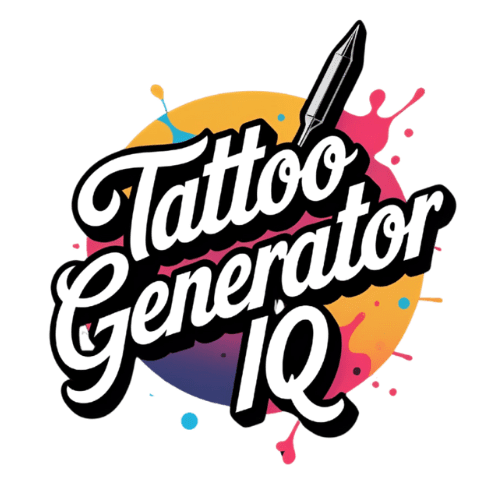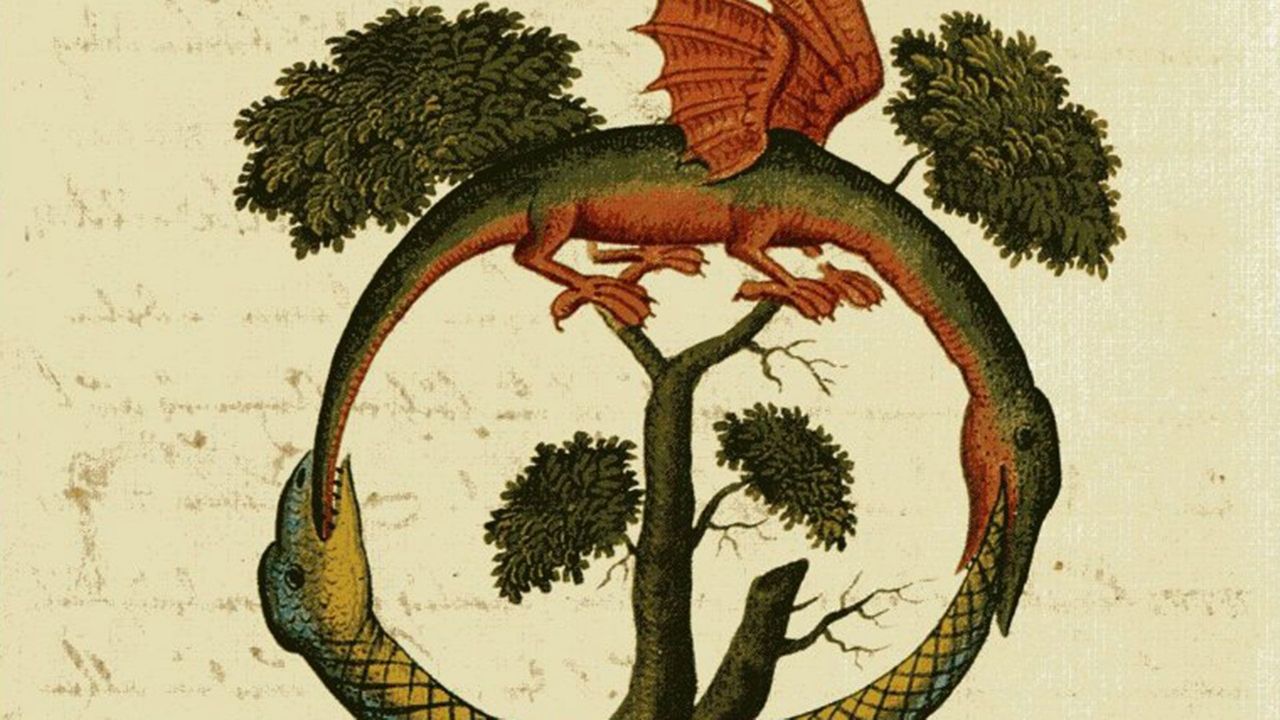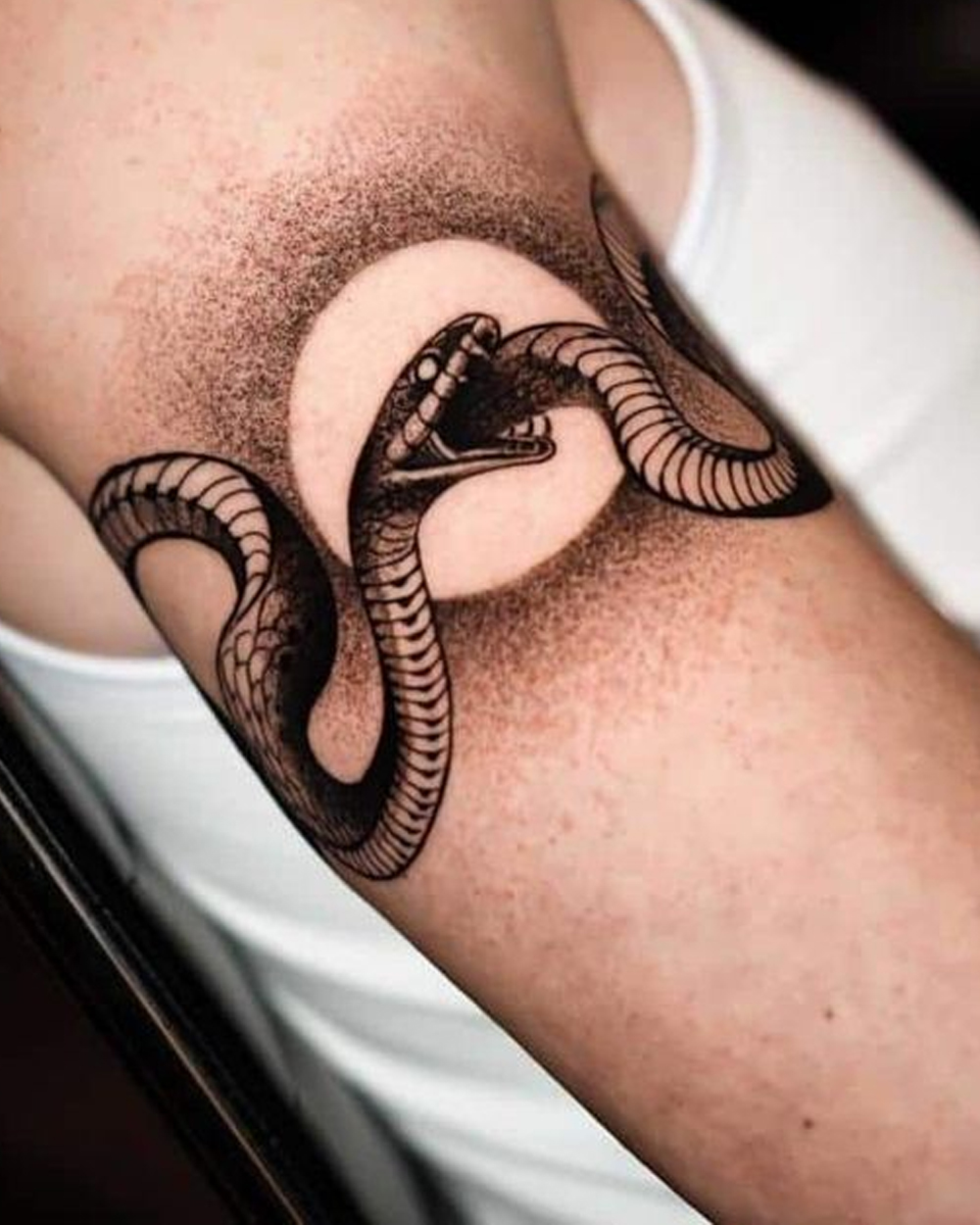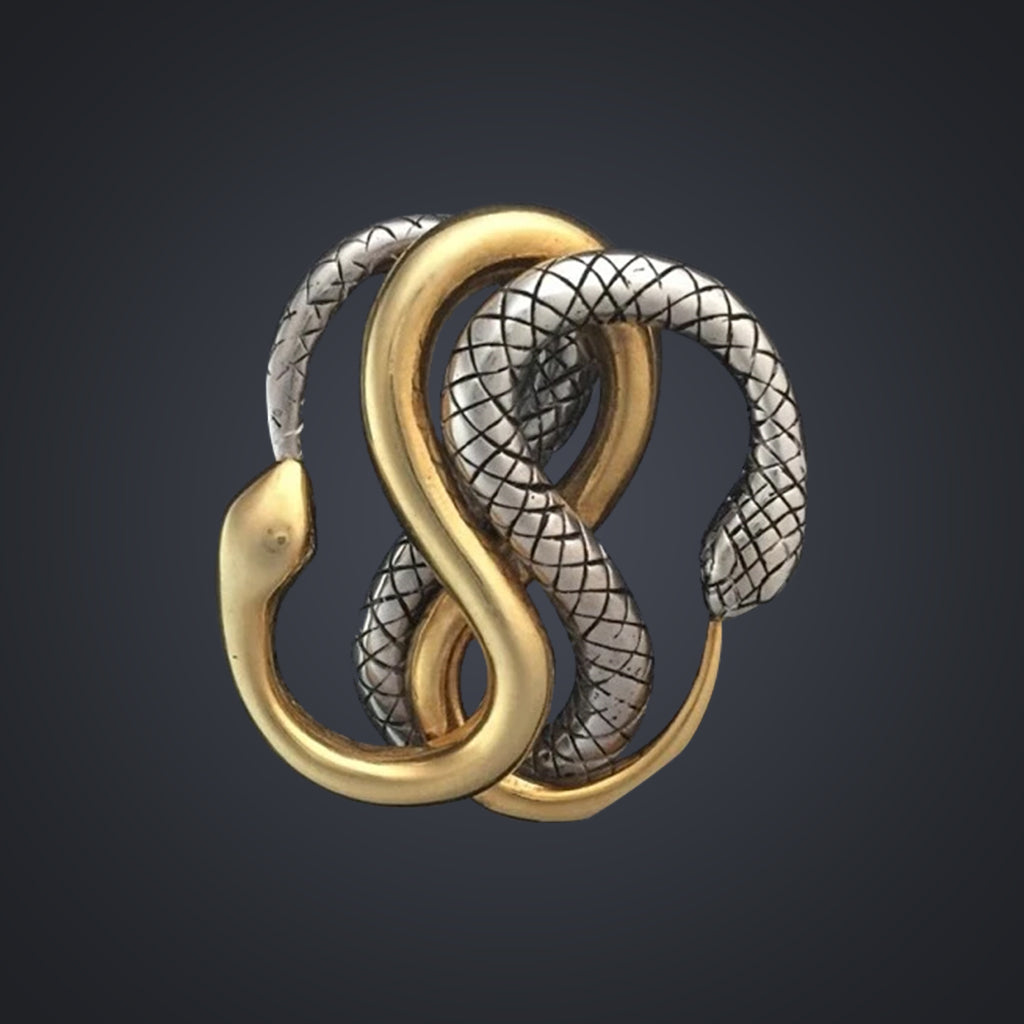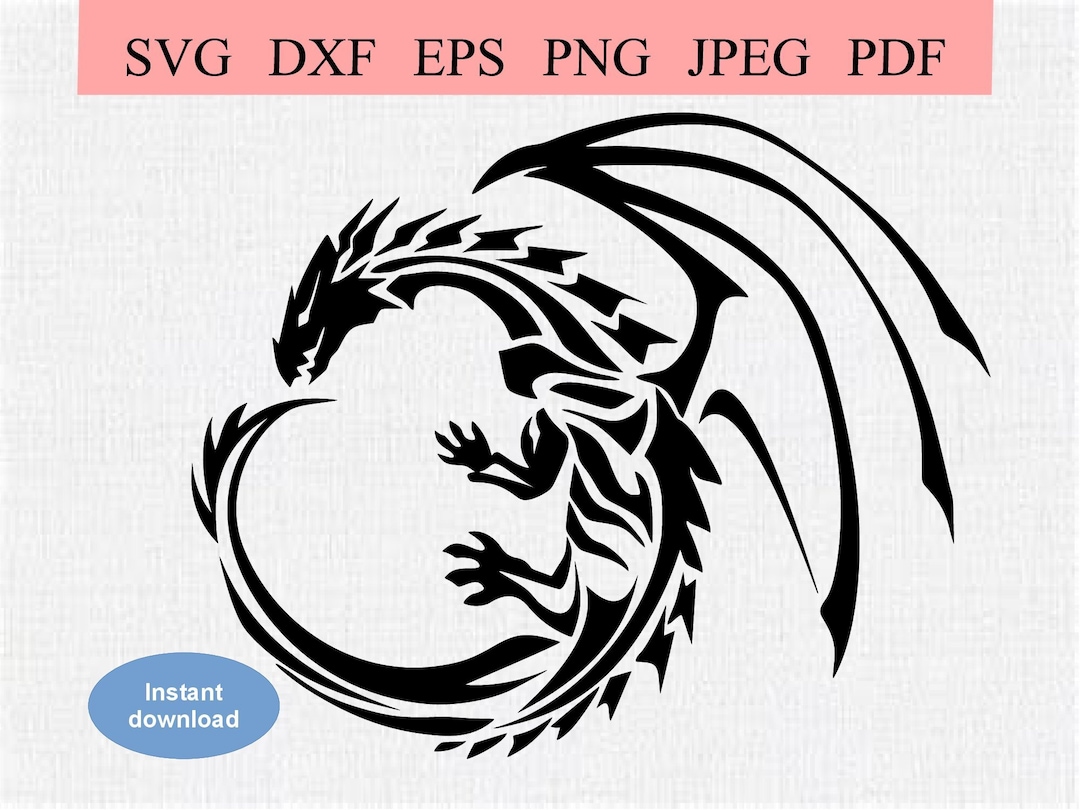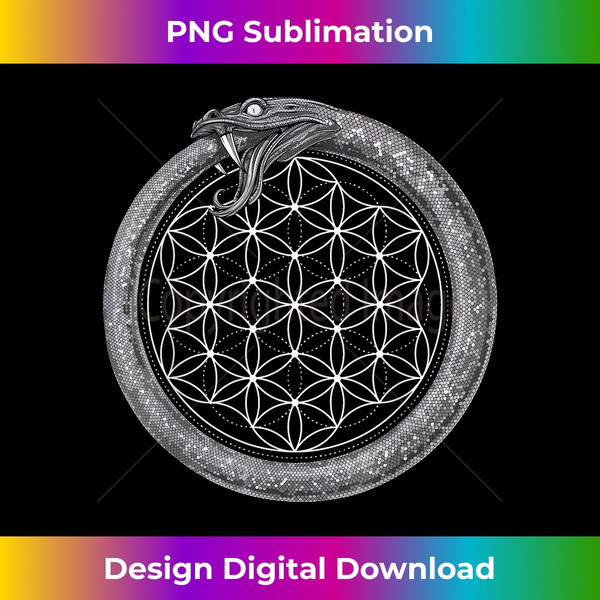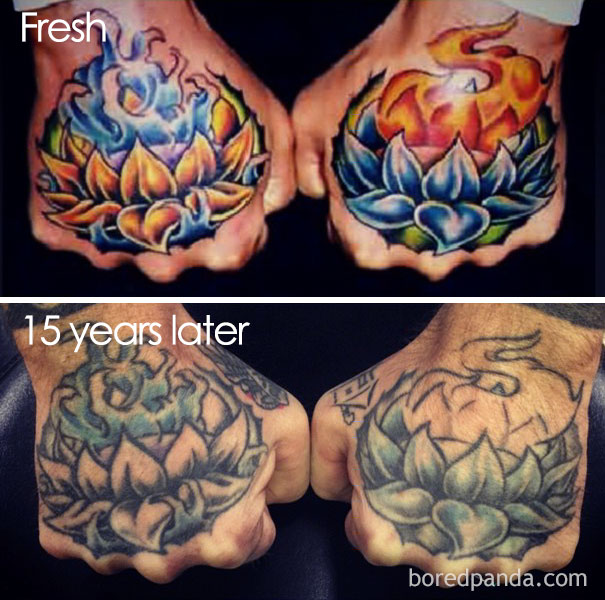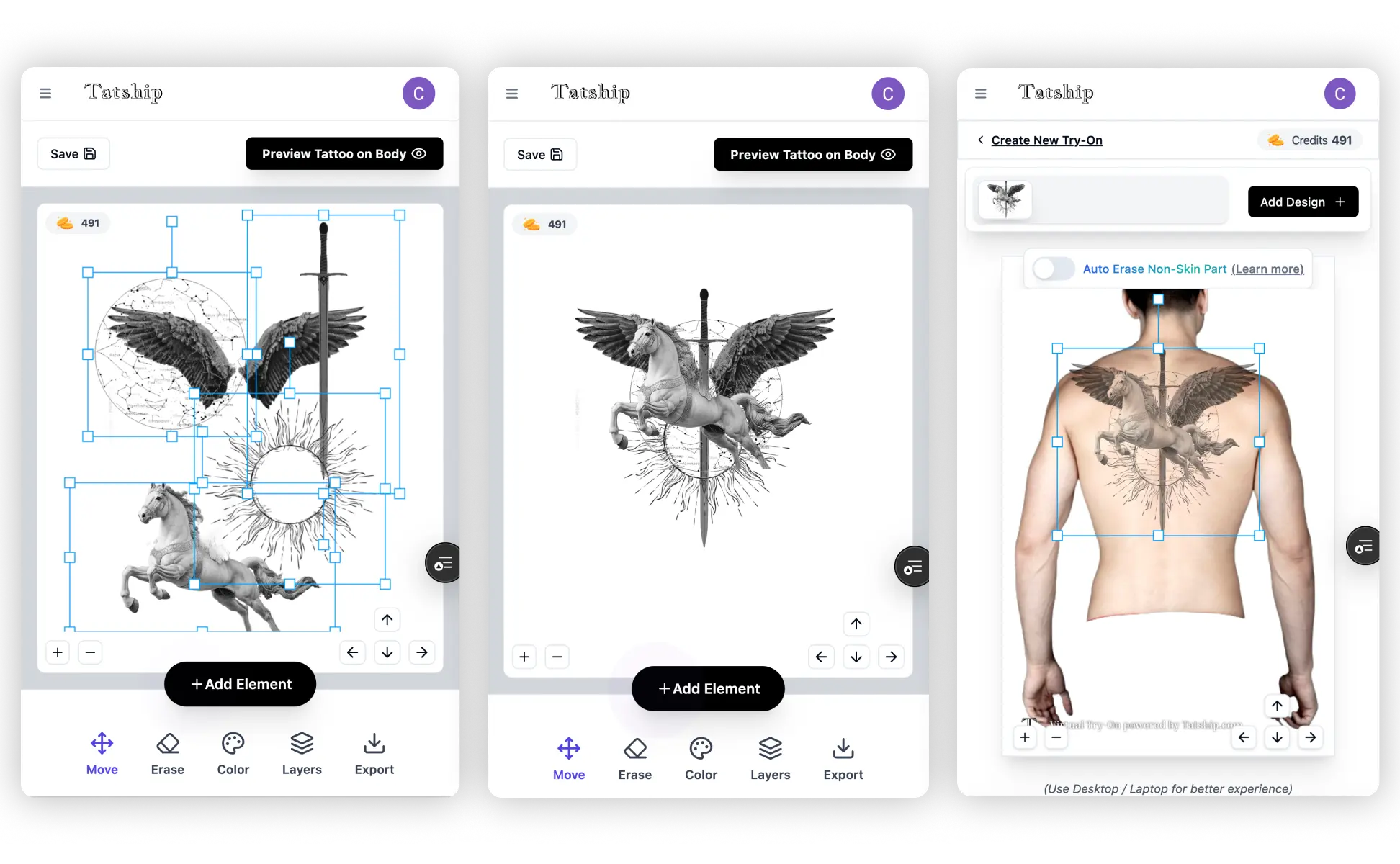25 Ouroboros Tattoo Designs That’ll Make You Question Everything About Eternal Cycles
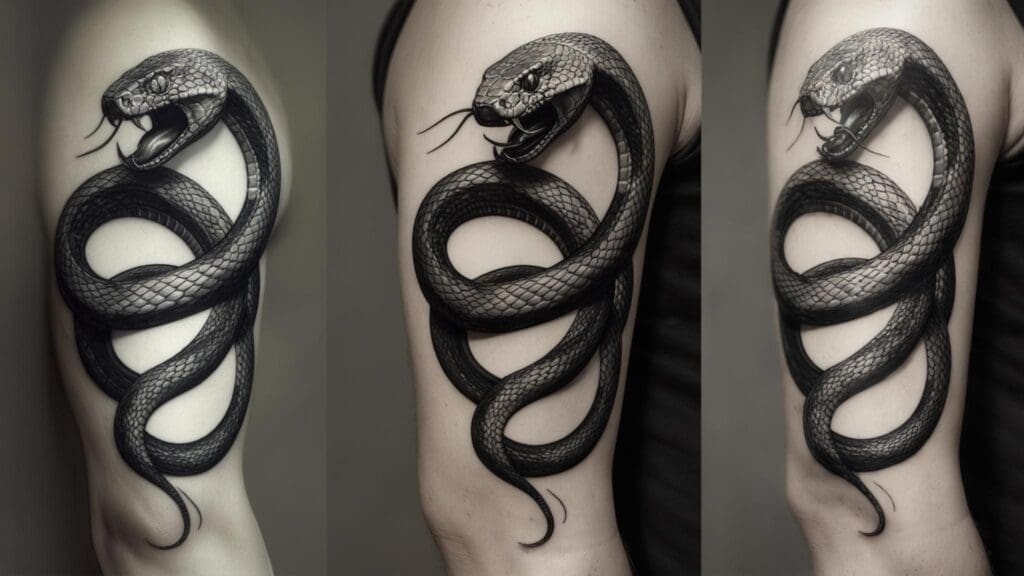
According to recent tattoo industry data, ouroboros tattoos have become increasingly popular among tattoo enthusiasts seeking designs with deep meaning, with many artists reporting a significant uptick in requests for this ancient symbol. I remember the first time I saw an ouroboros tattoo – it was on my college philosophy professor’s forearm, and when I asked about it, she spent the entire office hours explaining how the serpent eating its own tail perfectly captured her journey through academia: constantly learning, unlearning, and relearning. That conversation sparked my fascination with symbols that carry weight beyond their visual appeal.
The ouroboros represents one of humanity’s oldest symbols, depicting the eternal cycle of creation and destruction, life and death, beginning and end. This ancient icon has traveled through Egyptian mythology, alchemical traditions, and Norse legends to become a powerful choice for modern body art. Whether you’re drawn to its philosophical depth or striking circular design, choosing the right ouroboros tattoo requires understanding both its symbolic significance and practical considerations.
Source: bbc.co.uk
Table of Contents
- Essential Considerations for Your Ouroboros Tattoo
- Traditional and Cultural Designs
- Dragon Ouroboros Designs
- Geometric and Modern Designs
- Anatomical and Symbolic Variations
- Design Performance Analysis
- Final Thoughts
TL;DR
- Ouroboros tattoos work best in circular placements like shoulders, upper arms, and back pieces
- Simple, bold designs age significantly better than highly detailed variations
- Cultural designs require respectful research and understanding of their origins
- Size directly impacts detail visibility – complex designs need larger canvases
- Black and grey options offer superior longevity compared to colored versions
- Artist expertise in your chosen style is crucial for proper execution
- Minimalist and geometric designs provide the most versatile placement options
Essential Considerations for Your Ouroboros Tattoo
Before committing to an ouroboros tattoo, you need to evaluate several critical factors that will determine both the success of your design and your long-term satisfaction. These considerations include size and placement requirements, artistic complexity levels, symbolic meaning alignment, color choices, and finding an artist with the right expertise for your vision.
Size and placement work together – the circular nature demands specific body areas that complement the complete circle, with shoulder caps and back pieces offering ideal canvases. Artist selection becomes crucial since ouroboros designs require precise linework, symmetry, and understanding of circular composition principles that not all tattoo artists master.
When considering your first ouroboros tattoo, understanding pain levels across different body areas helps you choose the optimal placement for your circular design.
Size and Placement Strategy
The circular nature of ouroboros tattoo designs creates unique placement challenges and opportunities. You can’t just slap this symbol anywhere and expect it to work effectively.
Circular designs require body areas that won’t distort the perfect circle when muscles flex or skin stretches naturally. Size limitations directly impact detail visibility – intricate scales, text elements, or cultural symbols need minimum dimensions to remain readable over time.
| Placement Location | Recommended Size | Design Complexity | Aging Considerations |
|---|---|---|---|
| Wrist/Ankle | 2-3 inches | Minimalist only | Excellent aging, high visibility |
| Forearm | 4-6 inches | Simple to moderate | Good aging, professional considerations |
| Shoulder/Upper Arm | 6-8 inches | Moderate to complex | Excellent aging, easy to conceal |
| Back Piece | 8+ inches | Any complexity level | Superior aging, unlimited detail space |
| Ribcage | 5-7 inches | Simple to moderate | Fair aging due to skin stretching |
For those considering larger pieces, exploring shoulder tattoo placement options reveals why this area works perfectly for circular ouroboros designs.
Shoulder caps provide the perfect canvas for medium-sized ouroboros tattoos (4-8 inches). The natural curve of your shoulder enhances the circular flow, making the serpent appear to naturally follow your body’s contours. Upper arms work similarly well, especially if you’re considering a design that might expand into a larger piece later.
Back pieces offer unlimited potential for larger, more complex ouroboros tattoo designs. Here, you have the space for intricate details, additional symbolic elements, or even multiple intertwining serpents. The flat surface allows artists to maintain perfect circular proportions without worrying about body curves distorting the design.
Smaller placements (wrists, ankles, behind ears) work best with minimalist interpretations. These locations can’t accommodate the detail level of traditional ouroboros imagery, but they excel with clean line work and simplified forms.
Source: shopify.com
Placement strategy for ouroboros tattoos centers on finding body areas that complement the circular design while providing adequate space for your chosen detail level. The natural curves of shoulders and arms enhance the flowing nature of the symbol, while back pieces offer unlimited canvas space for complex variations.
Artistic Complexity and Longevity
Not all ouroboros tattoo designs age equally. The complexity level you choose today will significantly impact how your tattoo looks in 10, 20, or 30 years.
Line weight and spacing become critical factors – designs with proper line weights and adequate spacing between elements resist blurring as skin ages. Lifestyle factors like sun exposure and skin type should influence complexity choices since these affect how fine details hold up over decades.
Highly detailed designs with intricate scales, elaborate knotwork, or fine text elements face aging challenges. As your skin naturally changes over time, these fine details can blur together, losing their original clarity and impact. This doesn’t mean you should avoid detailed work entirely, but you need realistic expectations about maintenance requirements.
Bold, simple ouroboros tattoos consistently outperform complex variations in longevity tests. A classic serpent with clean lines and solid shading will maintain its visual impact decades longer than an elaborate Celtic knotwork version with dozens of interwoven elements.
Consider two clients who got ouroboros tattoos on the same day: Sarah chose a minimalist single-line serpent design on her wrist, while Mike opted for an intricate Celtic knotwork version with detailed scales and runic inscriptions covering his entire forearm. Five years later, Sarah’s tattoo looks virtually identical to the day she got it, requiring no touch-ups. Mike’s tattoo, while still recognizable, has lost much of its fine detail definition and required two touch-up sessions to maintain clarity. Both are happy with their choices, but understanding these aging patterns helps set realistic expectations.
Consider your lifestyle factors too. Sun exposure, weight fluctuations, and skin type all affect how tattoos age. If you’re someone who spends significant time outdoors or has naturally oily skin, simpler ouroboros tattoo designs will serve you better long-term.
Artistic complexity directly impacts tattoo longevity, with simpler, bolder designs consistently maintaining their visual impact longer than highly detailed variations. Understanding how different design elements age helps you make informed decisions about detail levels and maintenance expectations.
Cultural Sensitivity and Symbolic Accuracy
Ouroboros imagery appears across multiple cultures, each with specific symbolic meanings and artistic traditions. Approaching these ouroboros tattoo designs requires respect and understanding, not just aesthetic appreciation.
Research requirements vary by cultural origin – some symbols carry sacred significance that demands respectful understanding before use. Culturally neutral alternatives like geometric or anatomical interpretations provide meaningful symbolism without appropriation risks.
Egyptian ouroboros designs carry deep religious significance related to Ra’s daily journey and concepts of eternal time. If you’re drawn to hieroglyphic elements or cobra imagery, research the historical context rather than treating these as purely decorative elements.
Norse interpretations connect to Jörmungandr, the World Serpent, and concepts of cosmic balance. Celtic versions involve sacred knotwork patterns with specific mathematical relationships. Aztec feathered serpent designs relate to Quetzalcoatl and complex cosmological beliefs.
The safest approach involves either choosing culturally neutral interpretations (geometric, minimalist, or anatomical variations) or thoroughly researching specific cultural contexts. Some ouroboros tattoo designs work better as appreciation rather than appropriation when you understand their origins and significance.
Source: spirasolaris.ca
Cultural sensitivity becomes essential when choosing ouroboros designs that draw from specific traditions like Egyptian, Norse, Celtic, or Aztec imagery. Understanding the historical and religious significance of these symbols helps you approach them respectfully while avoiding cultural appropriation concerns.
Traditional and Cultural Designs
Traditional ouroboros designs draw from ancient cultural interpretations, each carrying specific symbolic meanings and artistic requirements. These designs range from simple serpent circles to complex cultural representations incorporating hieroglyphs, runes, knotwork, and mythological elements that demand both artistic skill and cultural understanding.
Cultural accuracy requires artists familiar with specific artistic traditions and symbolic elements unique to each culture’s interpretation. Traditional designs often need larger sizes to accommodate cultural details like hieroglyphs, runes, or knotwork patterns while maintaining readability.
1. Classic Serpent Ouroboros
The foundation of all ouroboros tattoo variations starts here – a realistic snake with detailed scales forming a perfect circle as it consumes its own tail. This timeless interpretation focuses on the natural beauty of serpent anatomy while maintaining the symbol’s essential meaning.
Scale detail execution requires consistent sizing and natural flow patterns that follow serpent anatomy principles. Shading gradients must create dimensional depth while maintaining the circular composition’s visual balance.
Scale detail becomes the defining characteristic of this ouroboros tattoo design. Each scale should flow naturally into the next, creating texture that catches light and shadow effectively. The serpent’s head requires careful attention to proportion and expression – too aggressive and it becomes menacing, too passive and it loses impact.
Shading techniques make or break this design. Subtle gradients create the illusion of a three-dimensional serpent wrapping around your body. The tail disappearing into the mouth needs seamless blending to maintain the illusion of continuous consumption.
Source: inkmat.ch
The classic serpent ouroboros represents the foundational design featuring realistic snake anatomy with detailed scales forming a perfect circle. Success depends on proper scale flow, balanced head proportions, and seamless shading techniques that create three-dimensional depth.
2. Egyptian-Inspired Ouroboros
Ancient Egyptian interpretations incorporate hieroglyphic elements and cobra-like serpents that connect to Ra’s solar journey. These ouroboros tattoo designs often feature the distinctive cobra hood and may include ankh symbols, Eye of Horus details, or cartouche elements within the circular composition.
Hieroglyphic integration demands research into appropriate symbols that complement eternal cycle themes rather than random decorative elements. Cobra anatomy differs from standard serpents, requiring understanding of hood structure and Egyptian artistic proportions.
Hieroglyphic accuracy matters significantly in these designs. Random Egyptian symbols scattered around your ouroboros can appear disrespectful or ignorant. Research specific hieroglyphs that complement the eternal cycle theme – symbols for life, death, rebirth, or time work appropriately.
Color choices in Egyptian ouroboros tattoos traditionally involve gold, deep blues, and earth tones that reflect ancient artistic palettes. However, black and grey versions often age better while maintaining the cultural aesthetic through line work and composition rather than color.
Source: mercuriousdesigns.com
Egyptian-inspired ouroboros designs incorporate hieroglyphic elements and cobra imagery that connect to ancient solar mythology and concepts of eternal time. These designs require cultural accuracy in symbol selection and understanding of traditional Egyptian artistic elements.
3. Norse/Viking Ouroboros (Jörmungandr)
Norse mythology presents Jörmungandr, the World Serpent that encircles Midgard while grasping its own tail. These ouroboros tattoos incorporate runic inscriptions, Nordic knotwork patterns, and the massive scale implied by a creature that surrounds the entire world.
Understanding Nordic tattoo traditions provides essential context for authentic Jörmungandr representations that respect Viking cultural heritage.
Runic inscription accuracy demands understanding of Elder or Younger Futhark alphabets and appropriate rune combinations for cosmic themes. Scale representation techniques must convey the world-encompassing nature of Jörmungandr through artistic elements that suggest immense size.
Runic accuracy becomes crucial for authentic Norse ouroboros tattoo designs. Each rune carries specific meanings, and combining them incorrectly can create nonsensical or potentially offensive messages. Research Elder Futhark or Younger Futhark alphabets and choose runes that align with concepts of fate, cycles, or cosmic balance.
Scale considerations become important since Jörmungandr represents a creature of immense size. The design should convey this cosmic scale through artistic techniques – perhaps showing only a section of the massive serpent or incorporating environmental elements that suggest world-encompassing size.
Norse ouroboros designs draw from Jörmungandr mythology, incorporating runic inscriptions and Nordic knotwork that represent cosmic balance and world-encompassing scale. These designs require understanding of runic meanings and techniques for conveying the immense scale of the World Serpent.
4. Aztec/Mayan Feathered Serpent
Quetzalcoatl-inspired ouroboros tattoos combine serpent and bird characteristics with geometric patterns and stepped pyramid elements typical of Mesoamerican art. These complex designs require understanding of indigenous artistic traditions and sacred symbolism.
Feather-to-scale transitions require seamless artistic execution that maintains both natural anatomy and cultural stylization. Geometric pattern accuracy demands research into authentic Mesoamerican mathematical relationships and symbolic meanings.
Feather detail becomes the distinguishing element that separates these designs from standard serpent ouroboros tattoos. Each feather should follow natural bird anatomy while incorporating the geometric stylization characteristic of Aztec and Mayan art. The transition between scales and feathers requires seamless artistic execution.
Geometric patterns in Mesoamerican art follow specific mathematical relationships and symbolic meanings. Random geometric elements can appear culturally insensitive. Research authentic patterns and understand their significance before incorporating them into your ouroboros tattoo design.
Aztec and Mayan feathered serpent designs combine Quetzalcoatl imagery with geometric patterns and stepped pyramid elements that require deep understanding of Mesoamerican artistic traditions. These complex designs demand expertise in both feather detail execution and culturally accurate geometric patterns.
5. Alchemical Ouroboros
Medieval alchemical traditions adopted the ouroboros as a symbol of the philosopher’s stone and eternal transformation. These ouroboros tattoo designs often include Latin text “Hen to pan” (The All is One) with manuscript-style illustration techniques reminiscent of medieval texts.
Latin text sizing must balance readability with circular composition requirements while maintaining medieval manuscript aesthetic. Manuscript styling elements should enhance the alchemical theme without overwhelming the central ouroboros symbol.
Text integration requires careful consideration of sizing and placement. Latin phrases need adequate space for readability while maintaining the circular composition’s visual balance. Font choices should reflect medieval manuscript traditions rather than modern typography.
Manuscript styling involves specific artistic techniques – illuminated letter elements, decorative borders, and the aged parchment aesthetic that characterizes alchemical texts. These elements should enhance rather than overwhelm the central ouroboros symbol.
Alchemical ouroboros designs incorporate medieval manuscript styling with Latin text and philosophical symbolism related to transformation and the philosopher’s stone. These designs require careful text integration and understanding of illuminated manuscript artistic techniques.
6. Chinese Dragon Ouroboros
Eastern dragon interpretations feature flowing whiskers, four legs, cloud motifs, and the benevolent characteristics typical of Chinese artistic traditions. These ouroboros tattoos combine Eastern and Western symbolism while respecting Chinese artistic conventions.
Chinese dragon anatomy follows specific proportional relationships and facial features that differ from Western dragon interpretations. Cloud and water motifs require additional space and artistic skill while maintaining cultural authenticity in their execution.
Dragon anatomy in Chinese tradition differs significantly from Western interpretations. Chinese dragons have specific proportional relationships, facial features, and limb arrangements that shouldn’t be altered arbitrarily. Research traditional Chinese dragon art to understand these conventions.
Cloud and water motifs often accompany Chinese dragons, representing their control over weather and water. These elements can enhance your ouroboros tattoo design while maintaining cultural authenticity. However, they require additional space and artistic skill to execute properly.
Source: shutterstock.com
Chinese dragon ouroboros designs feature Eastern dragon characteristics with flowing whiskers, four legs, and cloud motifs that combine Eastern and Western symbolism. These designs require understanding of traditional Chinese dragon anatomy and accompanying elemental motifs.
7. Celtic Knotwork Ouroboros
Celtic interpretations transform the serpent body into interwoven knotwork patterns with traditional Irish and Scottish design elements. These mathematically precise ouroboros tattoo designs require expert-level artistic skill and understanding of Celtic artistic principles.
Knotwork mathematics demand understanding of over-and-under patterns and continuous line principles that create authentic Celtic artistic elements. Size requirements become critical since knotwork detail needs adequate space for mathematical complexity and pattern recognition.
Knotwork mathematics follow specific rules about over-and-under patterns, continuous lines, and symmetrical relationships. Random interwoven lines don’t constitute authentic Celtic knotwork. Each crossing point must follow traditional patterns that create the illusion of continuous, unbroken cord.
Scale considerations become critical since Celtic knotwork requires adequate size for pattern clarity. Smaller versions lose the intricate detail that makes Celtic knotwork distinctive. Plan for medium to large sizing to accommodate the mathematical complexity properly.
Celtic knotwork ouroboros designs transform the serpent into interwoven patterns following traditional Irish and Scottish artistic principles. These mathematically precise designs require expert artistic skill and adequate sizing for pattern clarity and authentic knotwork execution.
Dragon Ouroboros Designs
Dragon ouroboros variations transform the traditional serpent into more powerful, mythological creatures that combine reptilian characteristics with wings, limbs, and elemental powers. These designs range from fierce Western dragons to minimalist interpretations, each requiring different artistic approaches and size considerations for proper execution.
Dragon anatomy complexity increases artistic requirements since wings, limbs, and facial features must maintain proper proportions within circular compositions. Elemental effects like fire, smoke, or mechanical elements add visual impact but require specialized artistic skills and may affect long-term aging.
8. Western Dragon Ouroboros
European-style dragons bring fierce expressions, bat-like wings, and flame effects to the traditional ouroboros concept. These powerful dragon ouroboros tattoo designs require substantial space for wing detail and dramatic facial features that convey the dragon’s mythological power.
Wing placement solutions must maintain circular flow while accommodating bat-like wing anatomy within the composition. Flame effects add visual drama but require color expertise and may need regular maintenance as colored elements fade.
Wing placement becomes a critical design challenge. Dragon wings must fit within the circular composition without disrupting the ouroboros flow. Some artists solve this by folding wings against the dragon’s body, while others extend wings beyond the circle’s boundary for dynamic effect.
Flame and smoke effects add visual drama but increase complexity significantly. These elements require color expertise and may need regular touch-ups as colored inks fade over time. Consider whether the added visual impact justifies the maintenance requirements.
Source: shopify.com
Western dragon ouroboros designs feature European-style dragons with wings, fierce expressions, and flame effects that require substantial space and careful wing placement within circular compositions. These powerful designs balance mythological drama with practical execution challenges.
9. Minimalist Dragon Ouroboros
Simplified dragon silhouettes maintain essential dragon characteristics while creating clean, uncluttered designs perfect for smaller placements or first tattoos. These ouroboros dragon tattoo designs focus on recognizable dragon elements without overwhelming detail.
Essential dragon feature selection must maintain creature identity while eliminating unnecessary detail that could blur over time. Versatility advantages include adaptability to various body locations and sizes while preserving visual impact through simplified execution.
Essential dragon features include elongated neck, distinctive head shape, and limb suggestions that clearly identify the creature as a dragon rather than a serpent. The challenge lies in simplifying these elements without losing the dragon’s identity or power.
Versatility becomes the major advantage of minimalist dragon ouroboros tattoos. They work across various body locations and sizes while maintaining visual impact. The simplified approach also ensures excellent aging properties since bold, simple elements resist blurring over time.
Minimalist dragon ouroboros designs simplify dragon anatomy to essential recognizable elements while maintaining clean, uncluttered aesthetics. These versatile designs work across various placements and sizes while offering excellent aging properties through bold, simple execution.
10. Dual-Dragon Ouroboros
Two dragons intertwined, each consuming the other’s tail, create yin-yang symbolism within the circular form. These complex dragon ouroboros tattoo compositions require expert planning and substantial size for clarity of the dual interaction.
Compositional balance techniques must maintain individual dragon identity while creating harmonious dual interaction within circular constraints. Size requirements increase significantly since dual creatures need adequate space for individual detail recognition and overall composition clarity.
Compositional balance becomes crucial when designing dual-dragon pieces. Each dragon must maintain individual identity while creating harmonious interaction with its partner. Color or shading differences can help distinguish between the two creatures.
Size requirements increase significantly since two dragons need adequate space for individual detail while maintaining overall circular composition. Plan for large format placement (12+ inches) to accommodate the complexity properly.
Dual-dragon ouroboros designs feature two intertwined dragons creating yin-yang symbolism through mutual consumption. These complex compositions require expert planning, substantial sizing, and careful balance between individual dragon identity and harmonious interaction.
11. Mechanical/Steampunk Dragon Ouroboros
Dragons incorporating gears, clockwork, and mechanical elements while maintaining organic dragon characteristics create unique fusion designs that appeal to steampunk enthusiasts and those interested in technology-nature combinations.
Mechanical integration demands understanding of functional gear relationships and clockwork mechanisms rather than random decorative elements. Dual expertise requirements include both organic dragon anatomy knowledge and technical illustration skills for convincing fusion execution.
Mechanical integration requires understanding of both organic dragon anatomy and functional mechanical elements. Gears should appear to serve actual mechanical purposes rather than random decorative additions. Research clockwork mechanisms to understand how gears, springs, and mechanical elements actually function.
Detail complexity reaches expert levels since both organic and mechanical elements require accurate execution. Artists need comfort with both natural anatomy and technical illustration to create convincing mechanical-organic fusion.
Mechanical steampunk dragon ouroboros designs fuse organic dragon anatomy with functional mechanical elements like gears and clockwork. These expert-level designs require understanding of both natural anatomy and mechanical function for convincing technology-nature fusion.
12. Watercolor Dragon Ouroboros
Dragon silhouettes with watercolor paint effects splashing beyond the circular boundary create modern artistic interpretations that appeal to contemporary art lovers. These ouroboros tattoos emphasize artistic technique over traditional symbolism.
Watercolor technique translation to skin requires specialized skills that differ from traditional tattoo methods and understanding of aging effects. Maintenance expectations include regular touch-ups since watercolor effects fade and blur more rapidly than traditional tattoo work.
Color bleeding effects require specialized artistic skills that differ from traditional tattoo techniques. Artists must understand how watercolor effects translate to skin and how they’ll age over time. Not all tattoo artists excel at watercolor techniques.
Aging considerations become significant since watercolor effects fade and blur more rapidly than traditional tattoo work. Plan for regular touch-ups and understand that the artistic effect may change substantially over time.
Watercolor dragon ouroboros designs feature dragon silhouettes with paint effects that extend beyond circular boundaries, creating contemporary artistic interpretations. These designs require specialized watercolor tattoo skills and regular maintenance due to faster fading and blurring.
13. Tribal Dragon Ouroboros
Bold, black tribal-style patterns form dragon shapes using traditional Polynesian or other indigenous design elements. These graphic ouroboros tattoos offer strong visual impact and excellent aging properties through solid black execution.
Understanding tribal tattoo meanings ensures respectful representation when incorporating indigenous patterns into dragon ouroboros designs.
Cultural pattern research prevents inappropriate use of sacred tribal elements while ensuring respectful representation of indigenous artistic traditions. Aging advantages include superior longevity through solid black execution that resists fading and maintains visual impact over decades.
Cultural sensitivity becomes important when using specific tribal patterns. Research the origins and meanings of tribal elements rather than using generic “tribal” patterns. Some tribal designs carry sacred significance that requires respectful understanding.
Aging advantages make tribal ouroboros tattoo designs excellent long-term choices. Solid black patterns resist fading and maintain strong visual impact across decades. The bold graphic approach ensures continued clarity even as skin naturally changes over time.
Source: etsy.com
Tribal dragon ouroboros designs use bold black patterns from Polynesian or other indigenous traditions to create graphic dragon shapes. These designs require cultural sensitivity research while offering excellent aging properties through solid black execution and strong visual impact.
Geometric and Modern Designs
Geometric and modern ouroboros interpretations combine mathematical precision with contemporary artistic approaches, creating designs that appeal to those seeking clean, structured aesthetics. These designs range from sacred geometry integration to minimalist line art, each requiring different levels of mathematical accuracy and artistic precision.
Mathematical precision becomes essential for geometric designs since inaccurate proportions or spacing can destroy the visual harmony that makes these designs effective. Contemporary artistic techniques like dotwork and fractal patterns require specialized skills that not all traditional tattoo artists possess.
14. Sacred Geometry Ouroboros
Serpents integrated with sacred geometric patterns like Flower of Life, Metatron’s Cube, or golden ratio spirals combine ancient symbolism with mathematical precision. These geometric ouroboros tattoo designs appeal to those interested in spiritual mathematics and universal patterns.
Geometric construction accuracy demands understanding of mathematical relationships rather than just artistic approximation of sacred patterns. Integration balance requires combining organic serpent flow with rigid geometric frameworks while maintaining both elements’ integrity.
Geometric accuracy becomes essential since sacred geometry relies on precise mathematical relationships. Inaccurate proportions destroy the spiritual and visual harmony that makes these patterns meaningful. Artists need understanding of geometric construction principles, not just artistic skill.
Integration challenges involve combining organic serpent curves with rigid geometric patterns. The serpent must flow naturally while respecting the geometric framework’s mathematical requirements. This balance requires careful planning and expert execution.
Source: inspireuplift.com
Sacred geometry ouroboros designs integrate serpents with mathematical patterns like Flower of Life or golden ratio spirals, requiring precise geometric construction and understanding of spiritual mathematics. These designs challenge artists to balance organic curves with rigid mathematical frameworks.
15. Mandala Ouroboros
Circular mandala patterns with ouroboros forming the outer ring incorporate lotus petals, geometric patterns, and symmetrical designs that combine Eastern spirituality with Western symbolism. These complex ouroboros tattoo designs require high symmetry precision.
Symmetry precision requirements reach expert levels since mandala effectiveness depends on perfect radial balance and element positioning. Cultural respect considerations require understanding of mandala spiritual significance in Hindu and Buddhist traditions rather than purely decorative treatment.
Symmetry requirements reach expert levels since mandalas depend on perfect radial balance. Each element must be precisely positioned and sized to maintain the mandala’s meditative quality. Small asymmetries become glaringly obvious in mandala designs.
Cultural respect considerations apply since mandalas carry spiritual significance in Hindu and Buddhist traditions. Approach these ouroboros tattoos with understanding of their meditative and spiritual purposes rather than treating them as purely decorative patterns.
Mandala ouroboros designs combine circular mandala patterns with ouroboros outer rings, incorporating Eastern spiritual elements that require perfect symmetry and cultural understanding. These complex designs demand expert-level precision in radial balance and respectful approach to spiritual symbolism.
16. Minimalist Line Art Ouroboros
Single continuous lines forming serpent shapes with minimal detail emphasize clean geometry and negative space. These deceptively simple ouroboros tattoo designs require perfect line execution with no room for error or correction.
For those drawn to clean aesthetics, exploring fine line tattoo approaches reveals techniques that make minimalist ouroboros designs particularly striking and long-lasting.
Line quality execution becomes critical since minimal designs offer no additional elements to mask imperfections or execution errors. Versatility benefits include adaptability to various sizes and placements while maintaining visual impact through clean aesthetic principles.
Line quality becomes the sole determining factor of success. Every curve, angle, and connection point must be executed flawlessly since there are no additional elements to distract from imperfections. This apparent simplicity actually increases difficulty significantly.
Versatility advantages include adaptability to various sizes and placements while maintaining visual impact. Minimalist ouroboros tattoos work equally well as small, subtle pieces or larger statement tattoos. The clean aesthetic appeals to modern sensibilities while ensuring excellent aging properties.
Alex, a software engineer, chose a minimalist single-line ouroboros for his first tattoo. Despite its apparent simplicity, the design took his artist three attempts to perfect the continuous line flow. The final result – a 3-inch circle on his forearm – appears effortless but required exceptional technical skill. Two years later, the clean lines remain crisp and the design has become a conversation starter at tech conferences, perfectly representing his philosophy of elegant code solutions.
Minimalist line art ouroboros designs use single continuous lines with minimal detail to emphasize clean geometry and negative space. These deceptively challenging designs require perfect line execution while offering versatility in sizing and placement with excellent aging properties.
17. Dotwork Ouroboros
Serpents created entirely through stippling/dotwork technique with gradient shading achieved through dot density variation create unique textures that appeal to those wanting distinctive artistic approaches. These time-intensive ouroboros tattoos require specialized expertise.
Dot density control techniques create form and shading illusions through carefully varied spacing and sizing that requires patience and precision. Aging improvement characteristics occur as individual dots blur slightly, creating smoother gradients that enhance rather than degrade the design.
Dot density control creates the illusion of solid forms and gradient shading through carefully varied spacing and dot sizes. This technique requires patience and precision since each dot contributes to the overall form and shading effect.
Aging characteristics of dotwork often improve over time as individual dots slightly blur together, creating smoother gradients. This natural aging process can actually enhance the design’s appearance rather than degrade it, making dotwork an excellent long-term choice.
Dotwork ouroboros designs create serpent forms through stippling techniques with gradient shading achieved through dot density variation. These time-intensive designs require specialized expertise while offering unique aging characteristics that often improve appearance over time.
18. Fractal Ouroboros
Mathematical fractal patterns incorporated into serpent designs create self-similar patterns at multiple scales that appeal to mathematics enthusiasts and those wanting truly unique ouroboros tattoo designs. These complex concepts require specialized artistic knowledge.
Mathematical accuracy requirements demand understanding of fractal rules and relationships rather than artistic approximation of complex patterns. Scale complexity balance must consider infinite fractal detail theory against practical limitations of skin tattoo execution and maintenance.
Mathematical accuracy becomes crucial since fractals follow specific mathematical rules and relationships. Random geometric patterns don’t constitute true fractals. Artists need understanding of fractal mathematics, not just artistic interpretation of complex patterns.
Scale complexity increases since fractals theoretically contain infinite detail at every scale level. Tattoo applications must balance mathematical accuracy with practical limitations of what can be effectively executed and maintained on skin.
Fractal ouroboros designs incorporate mathematical fractal patterns with self-similar elements at multiple scales, requiring specialized knowledge of fractal mathematics rather than random geometric interpretation. These unique designs balance mathematical accuracy with practical tattoo execution limitations.
19. Art Deco Ouroboros
1920s-inspired geometric styling with angular patterns, metallic effects, and symmetrical design elements create vintage aesthetic appeal for those drawn to Art Deco elegance and sophistication.
Design principle accuracy requires understanding of authentic Art Deco characteristics rather than random angular geometric patterns. Metallic effect execution demands color layering expertise and regular maintenance as metallic colors fade or shift over time.
Design principle understanding requires knowledge of Art Deco characteristics – angular geometry, metallic color palettes, symmetrical compositions, and the luxury aesthetic of the 1920s era. Random angular patterns don’t constitute authentic Art Deco styling.
Metallic effect execution requires color expertise since gold, silver, and bronze effects depend on proper color layering and highlighting techniques. These effects may require regular touch-ups as metallic colors can fade or shift over time.
Source: media-amazon.com
Art Deco ouroboros designs feature 1920s geometric styling with angular patterns and metallic effects that require understanding of authentic Art Deco design principles. These vintage-inspired designs need color expertise for metallic effects and may require regular maintenance.
Anatomical and Symbolic Variations
Anatomical and symbolic ouroboros variations explore scientific, natural, and mathematical interpretations that combine ancient symbolism with modern understanding. These designs range from skeletal anatomy to DNA helixes, each requiring specialized knowledge and offering unique symbolic meanings beyond traditional serpent imagery.
Scientific accuracy becomes important for anatomical designs since incorrect representation can appear unprofessional or diminish the design’s credibility. Symbolic fusion techniques must balance multiple meaning layers while maintaining visual coherence and avoiding symbolic confusion.
20. Skeleton Ouroboros
Serpents depicted as skeletal remains with visible vertebrae, ribs, and skull emphasize death/rebirth symbolism through anatomical accuracy. These ouroboros skeleton tattoo designs appeal to those comfortable with mortality themes and memento mori symbolism.
Anatomical accuracy demands understanding of serpent skeletal structure including vertebrae arrangement and skull proportions for believable execution. Symbolic intensity considerations include comfort with mortality themes and potential strong reactions from viewers encountering skeleton imagery.
Anatomical accuracy requires understanding of serpent skeletal structure – vertebrae arrangement, rib attachment points, and skull proportions. Incorrect anatomy appears obviously wrong to viewers familiar with skeletal structure, diminishing the design’s impact.
Symbolic intensity increases significantly since skeletal imagery directly confronts mortality themes. Consider whether you’re comfortable with the reactions and conversations this imagery might generate, as skeleton ouroboros tattoos often provoke strong responses from viewers.
Skeleton ouroboros designs feature anatomically accurate serpent skeletal remains that emphasize death and rebirth symbolism through memento mori imagery. These designs require understanding of serpent anatomy while potentially generating strong viewer reactions due to mortality themes.
21. DNA Helix Ouroboros
Double helix DNA structures forming circular ouroboros shapes combine scientific accuracy with ancient symbolism, creating unique modern interpretations that appeal to medical professionals and science enthusiasts.
Scientific accuracy requirements include understanding DNA base pair relationships and helix twist patterns for professional appearance. Symbolic fusion meaning combines genetic life blueprints with eternal cycle themes, creating layers of scientific and philosophical significance.
Scientific accuracy becomes important since DNA structure follows specific rules – base pair relationships, helix twist patterns, and molecular proportions. Incorrect DNA representation can appear unprofessional, especially to viewers with scientific backgrounds.
Symbolic fusion creates interesting meaning layers – DNA represents the blueprint of life while ouroboros represents eternal cycles. This combination suggests themes of genetic continuity, evolutionary cycles, and the scientific basis of life’s eternal patterns.
Source: instagram.com
DNA helix ouroboros designs combine scientific accuracy with ancient symbolism by forming circular compositions from double helix structures. These modern interpretations require understanding of molecular structure while creating meaningful fusion between scientific and symbolic elements.
22. Tree of Life Ouroboros
Serpents intertwined with or formed by tree branches and roots create nature-based circular compositions that combine multiple powerful symbols. These complex organic ouroboros tattoos require skilled artists and larger sizing for proper execution.
Organic complexity demands understanding of natural tree growth patterns, root systems, and bark textures for believable botanical execution. Symbolic multiplication creates rich meaning layers combining growth, cycles, connection, and natural wisdom themes in single compositions.
Organic complexity increases significantly since both tree and serpent elements must appear natural while creating harmonious interaction. Root systems, branch patterns, and bark textures all require understanding of natural growth patterns and botanical accuracy.
Symbolic multiplication occurs when combining Tree of Life and ouroboros meanings – growth and cycles, connection and continuity, natural wisdom and eternal patterns. This rich symbolism appeals to those seeking deep meaning in their body art.
Tree of Life ouroboros designs combine serpents with tree branches and roots in complex organic compositions that multiply symbolic meanings through natural elements. These designs require botanical understanding and skilled execution of organic forms within circular constraints.
23. Infinity Symbol Ouroboros
Figure-eight infinity symbols with serpent heads at crossing points create mathematical precision within organic forms, emphasizing the eternal nature of ouroboros symbolism through mathematical representation.
Mathematical precision requirements include perfect figure-eight proportions and symmetrical curves for effective infinity symbol recognition. Symbolic clarity benefits provide immediate eternal theme recognition that reinforces ouroboros meaning for broader audiences.
Mathematical precision becomes essential since infinity symbols depend on perfect figure-eight proportions and symmetrical curves. Imprecise execution destroys the mathematical elegance that makes these ouroboros tattoo designs effective.
Symbolic clarity increases through mathematical representation of eternal concepts. The infinity symbol provides immediately recognizable eternal symbolism that reinforces and clarifies the ouroboros meaning for viewers unfamiliar with ancient symbolism.
Infinity symbol ouroboros designs combine figure-eight mathematical forms with serpent heads at crossing points, requiring precise execution while providing clear symbolic representation of eternal themes. These designs balance mathematical accuracy with organic serpent elements.
24. Phoenix-Serpent Hybrid Ouroboros
Creatures combining phoenix and serpent characteristics with fire elements emphasize rebirth and transformation through dual mythological symbolism. These complex hybrid ouroboros tattoos require expert anatomical understanding and fire effect execution.
Hybrid anatomy execution must convincingly integrate bird and serpent characteristics while maintaining creature coherence and natural appearance. Fire effect complexity requires color expertise and regular maintenance considerations for enhanced symbolism and visual impact.
Hybrid anatomy challenges require convincing combination of bird and serpent characteristics while maintaining creature coherence. Feathers, scales, wings, and serpentine body must integrate naturally rather than appearing randomly assembled.
Fire effect complexity adds visual drama but requires color expertise and may need regular maintenance. Consider whether the enhanced symbolism and visual impact justify the additional complexity and upkeep requirements.
Phoenix-serpent hybrid ouroboros designs combine dual mythological creatures with fire elements to emphasize rebirth and transformation themes. These expert-level designs require convincing hybrid anatomy execution and fire effect expertise with potential maintenance requirements.
25. Cosmic/Space Ouroboros
Serpents integrated with celestial elements like stars, planets, and nebulae create universe-within-circle symbolism that appeals to astronomy enthusiasts and those seeking cosmic connection themes.
Astronomical accuracy research enhances credibility through realistic nebula colors, planet proportions, and star formation patterns rather than generic space imagery. Color complexity requirements include subtle gradients, nebula effects, and stellar lighting that demand expert techniques and regular maintenance.
Astronomical accuracy enhances credibility since many viewers recognize celestial objects and patterns. Research actual nebula colors, planet proportions, and star formation patterns rather than using generic “space” imagery for more convincing cosmic representation.
Color complexity reaches expert levels since space imagery depends on subtle color gradients, nebula effects, and stellar lighting. These complex color requirements may need regular touch-ups and require artists comfortable with advanced color techniques.
Source: craiyon.com
Cosmic space ouroboros designs integrate serpents with accurate celestial elements like stars, planets, and nebulae to create universe symbolism. These designs benefit from astronomical accuracy while requiring expert-level color techniques and potential maintenance for complex space imagery.
Design Performance Analysis
Understanding how different ouroboros designs perform across key considerations helps you make informed decisions about complexity, placement, longevity, and cultural sensitivity. This analysis reveals that simpler, bolder designs consistently outperform complex variations while culturally neutral approaches avoid appropriation concerns.
Performance patterns show consistent advantages for bold, simple designs across all consideration categories including aging, placement versatility, and maintenance requirements. Cultural sensitivity analysis reveals clear distinctions between neutral symbolic approaches and designs requiring specific cultural knowledge or respectful representation.
Size and Placement Performance
Small placement success (2-4 inches) works best with minimalist designs like single-line art (#16) and simplified dragon silhouettes (#9). These ouroboros tattoo designs maintain visual impact and clarity at reduced sizes while working effectively on wrists, ankles, or behind ears.
Understanding shoulder tattoo costs helps budget appropriately for medium to large ouroboros designs that work best in these optimal placement areas.
Small placement limitations restrict detail levels but offer versatility for subtle, professional-appropriate tattoo locations. Large placement requirements increase both cost and commitment while providing unlimited creative possibilities for complex symbolic combinations.
Medium placement requirements (4-8 inches) accommodate most traditional ouroboros tattoos including classic serpents (#1), basic geometric patterns (#14), and cultural interpretations (#2-6). These sizes provide adequate space for moderate detail while fitting comfortably on shoulders, upper arms, or forearms.
Large placement essentials (8+ inches) become necessary for complex designs like dual dragons (#10), detailed Celtic knotwork (#7), and anatomical variations (#20-25). These intricate ouroboros tattoo designs require substantial canvas space for proper detail execution and visual impact.
| Design Category | Minimum Size | Optimal Placement | Aging Rating | Maintenance Level |
|---|---|---|---|---|
| Minimalist (#16, #9) | 2-4 inches | Any location | Excellent | Minimal |
| Traditional (#1-7) | 4-8 inches | Shoulder/Upper arm | Good | Low to Moderate |
| Geometric (#14-19) | 3-6 inches | Forearm/Back | Very Good | Low |
| Dragon Variations (#8-13) | 6-12 inches | Back/Shoulder | Good | Moderate |
| Anatomical/Symbolic (#20-25) | 8+ inches | Back piece | Variable | Moderate to High |
Size and placement analysis reveals clear performance patterns with minimalist designs excelling in small placements, traditional designs requiring medium space, and complex variations demanding large canvases. Understanding these requirements prevents design disappointment and ensures proper visual impact.
Artistic Complexity Levels
Beginner-friendly ouroboros tattoo designs include minimalist line art (#16), simple tribal patterns (#13), and basic geometric shapes that offer lower risk for newer artists while maintaining strong visual impact. These designs forgive minor execution imperfections while delivering satisfying results.
Complexity matching prevents disappointment by aligning design ambitions with available artist skills and experience levels. Expert-level investment requirements include higher costs, longer sessions, and potentially limited artist availability for specialized techniques.
Intermediate complexity encompasses traditional serpents (#1), basic sacred geometry (#14), and standard cultural designs that require solid technical skills but remain achievable for competent professional artists with proper experience and portfolio demonstration.
Expert-level requirements apply to Celtic knotwork (#7), mechanical details (#11), anatomical accuracy (#20-21), and complex cultural ouroboros tattoos (#4) that demand specialized expertise, extensive experience, and demonstrated mastery of specific artistic techniques.
When Maria researched artists for her Celtic knotwork ouroboros, she discovered that only three artists within 100 miles had portfolios demonstrating authentic Celtic knotwork expertise. She waited six months for an appointment with the most experienced artist, who spent four hours executing the mathematical precision required for her 10-inch back piece. The investment in expert-level skill resulted in a museum-quality piece that maintains perfect symmetry and authentic knotwork patterns two years later.
Artistic complexity analysis helps match design ambitions with realistic artist capabilities, revealing that beginner-friendly options can deliver excellent results while expert-level designs require careful artist selection and higher investment for proper execution.
Longevity and Aging Patterns
Excellent aging properties characterize bold tribal designs (#13), minimalist line art (#16), and classic black serpents (#1) that maintain clarity and visual impact across decades through simple, strong elements that resist natural skin changes.
Aging pattern recognition helps set realistic expectations for design evolution and maintenance needs over decades. Maintenance budgeting considerations include touch-up frequency, color refreshing costs, and potential design modification needs.
Good long-term prospects apply to traditional ouroboros tattoos (#2-6) and basic geometric patterns (#14-15) that age well with proper care and occasional touch-ups, maintaining their essential character while potentially softening in fine details.
Maintenance requirements increase for watercolor effects (#12), detailed dotwork (#17), and complex color schemes (#24-25) that may need regular refreshing to maintain vibrancy and prevent significant appearance changes over time.
Source: boredpanda.com
Longevity analysis reveals clear patterns favoring simple, bold designs for long-term satisfaction while highlighting maintenance requirements for complex color work and detailed elements. Understanding aging expectations helps inform design choices and budget planning.
Cultural Sensitivity Assessment
Culturally neutral ouroboros tattoo designs including minimalist (#16), geometric (#14-19), and anatomical (#20-25) variations avoid appropriation concerns while maintaining symbolic power through universal themes and mathematical or scientific accuracy.
Neutral design advantages include symbolic power without appropriation risks, appealing to diverse audiences while maintaining meaningful representation. Cultural research requirements vary by tradition, with some symbols demanding deep understanding and consultation for respectful representation.
Cultural context importance applies to Egyptian (#2), Norse (#3), Aztec (#4), Celtic (#7), and Chinese (#6) designs that require respectful approach, historical understanding, and potentially consulting with cultural practitioners for appropriate representation.
Research requirements vary significantly by cultural origin, with some symbols carrying sacred significance that demands deep understanding and respectful representation rather than superficial aesthetic appreciation or random cultural element combination.
| Cultural Origin | Research Level Required | Appropriation Risk | Recommended Approach |
|---|---|---|---|
| Egyptian | Moderate | Medium | Study hieroglyphic meanings, avoid sacred symbols |
| Norse/Viking | High | Low | Understand runic meanings, respect mythology |
| Celtic | High | Medium | Learn authentic knotwork patterns, avoid random designs |
| Aztec/Mayan | Very High | High | Consult cultural practitioners, deep historical study |
| Chinese Dragon | Moderate | Low | Understand traditional anatomy, respect artistic conventions |
| Alchemical | Low | Very Low | Historical context helpful but not essential |
| Neutral/Modern | Minimal | None | Focus on personal meaning and artistic quality |
Cultural sensitivity assessment provides clear guidance for respectful design choices, distinguishing between neutral symbolic approaches and culturally specific designs that require research, understanding, and respectful representation of their origins and significance.
Bridging Vision and Reality with Modern Design Tools
Choosing the perfect ouroboros tattoo involves balancing personal meaning, artistic execution, and practical considerations, but the design process can feel overwhelming when communicating your vision to artists. Modern technology bridges this gap between imagination and reality through innovative design exploration tools.
Vision communication challenges often arise from difficulty describing complex symbolic and artistic preferences to tattoo artists without visual references. Technology solutions provide visual exploration capabilities that help refine concepts before committing to permanent ink decisions.
The design process becomes significantly easier when you can visualize different approaches before making permanent decisions. Tattoo Generator IQ offers an innovative solution for exploring ouroboros concepts through AI-powered design generation that creates professional-quality references based on your descriptions.
Whether you’re drawn to geometric precision of mandala ouroboros, fierce power of dragon designs, or cultural richness of traditional serpent imagery, the platform’s intuitive interface lets you describe your vision and see multiple interpretations instantly. This technology proves particularly valuable for ouroboros tattoos, where circular composition and symbolic complexity benefit from visual exploration.
Source: tatship.com
The platform’s ability to generate multiple variations helps you consider different artistic approaches – perhaps starting with a traditional serpent concept but exploring how geometric elements or color variations might enhance your personal vision. High-resolution outputs and artist-ready references enable clear visual communication with your chosen tattoo artist, ensuring final results match your expectations.
Your ouroboros tattoo should be as eternal and meaningful as the symbol itself. By combining comprehensive considerations with creative design exploration tools, you can confidently move forward with an ouroboros tattoo shoulder placement, ouroboros back tattoo composition, or any other design that truly represents your personal journey of renewal, reflection, and transformation.
Final Thoughts
The ouroboros represents one of humanity’s most enduring symbols, carrying profound meanings that have resonated across cultures and centuries. Your choice to incorporate this ancient symbol into your body art connects you to a rich tradition of philosophical and spiritual exploration while creating a deeply personal statement about cycles, renewal, and transformation.
Before finalizing your ouroboros tattoo decision, reviewing comprehensive tattoo pricing guides helps you budget appropriately for the size and complexity level that best suits your vision.
Long-term satisfaction correlates strongly with understanding design performance patterns, cultural significance, and realistic aging expectations before making permanent decisions. Technology integration in tattoo planning reduces communication barriers and design disappointment while enabling more precise artistic collaboration and vision realization.
Success with ouroboros tattoos depends on understanding the relationship between symbolic meaning, artistic execution, and practical considerations. Simple, bold designs consistently outperform complex variations in longevity and satisfaction, while cultural sensitivity ensures respectful representation of traditional interpretations. The circular nature of ouroboros designs creates unique placement opportunities and challenges that require careful consideration of body contours and available canvas space.
Modern design exploration tools have revolutionized the tattoo planning process, allowing you to visualize concepts and communicate effectively with artists before making permanent commitments. Whether you’re considering an ouroboros tattoo color scheme with vibrant hues or a bold red ouroboros tattoo that makes a striking statement, this technological advancement, combined with thorough research and understanding of design considerations, empowers you to make informed decisions that result in meaningful, well-executed body art that maintains its impact and significance throughout your lifetime.
Source: reddit.com
